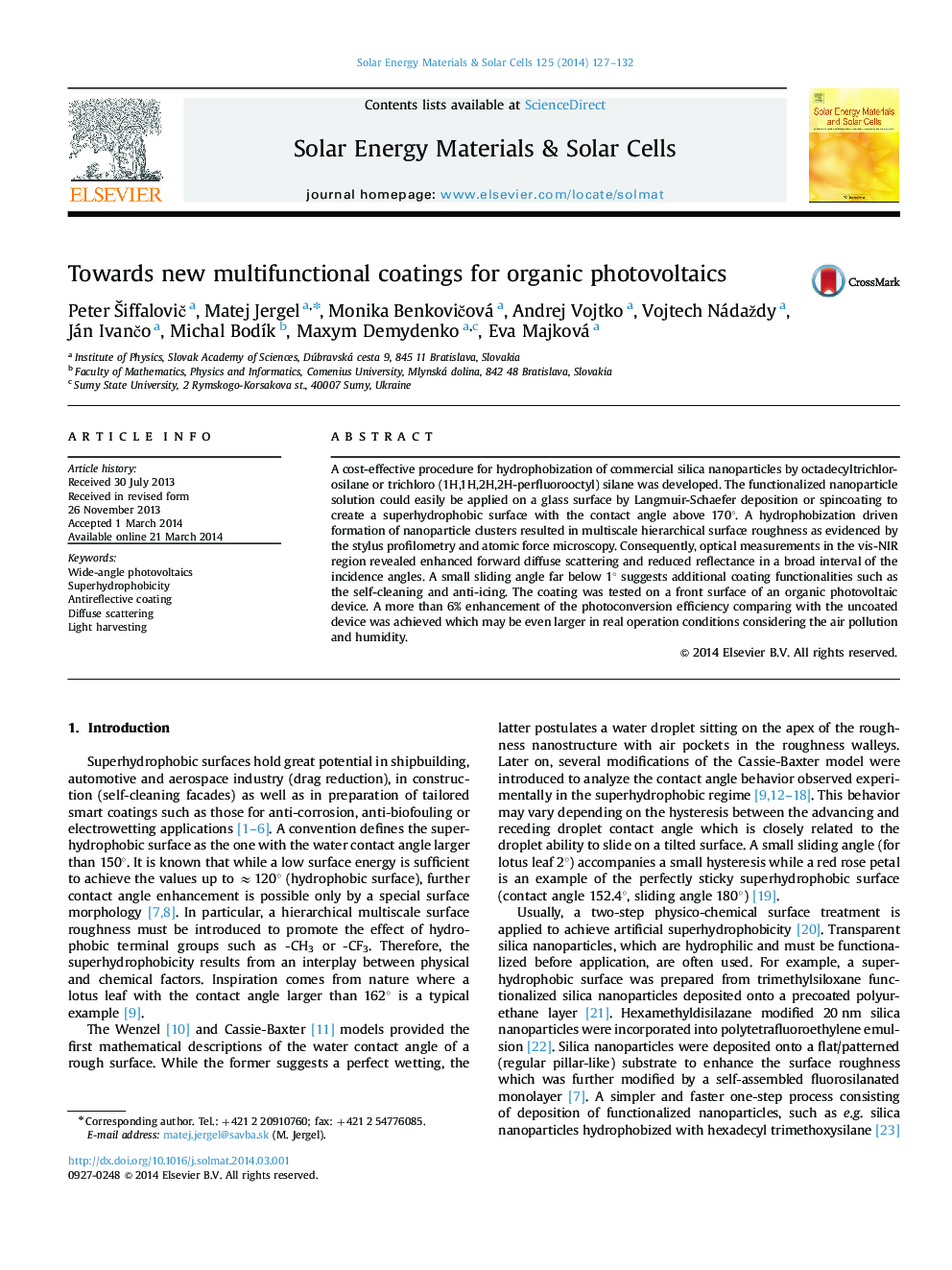| Article ID | Journal | Published Year | Pages | File Type |
|---|---|---|---|---|
| 78092 | Solar Energy Materials and Solar Cells | 2014 | 6 Pages |
•A cost-effective hydrophobization of commercial silica nanoparticles is introduced.•The nanoparticle solution is easily applicable by spincoating or LS deposition.•The contact angle above 170° implies excellent superhydrophobicity.•Enhanced haze factor and wide-angle diffuse scattering in the vis–NIR are detected.•A more than 6 % improvement on an organic solar cell efficiency is achieved.
A cost-effective procedure for hydrophobization of commercial silica nanoparticles by octadecyltrichlorosilane or trichloro (1H,1H,2H,2H-perfluorooctyl) silane was developed. The functionalized nanoparticle solution could easily be applied on a glass surface by Langmuir-Schaefer deposition or spincoating to create a superhydrophobic surface with the contact angle above 170°. A hydrophobization driven formation of nanoparticle clusters resulted in multiscale hierarchical surface roughness as evidenced by the stylus profilometry and atomic force microscopy. Consequently, optical measurements in the vis-NIR region revealed enhanced forward diffuse scattering and reduced reflectance in a broad interval of the incidence angles. A small sliding angle far below 1° suggests additional coating functionalities such as the self-cleaning and anti-icing. The coating was tested on a front surface of an organic photovoltaic device. A more than 6% enhancement of the photoconversion efficiency comparing with the uncoated device was achieved which may be even larger in real operation conditions considering the air pollution and humidity.
